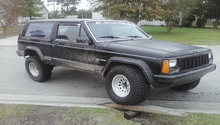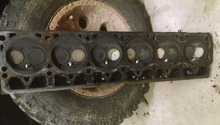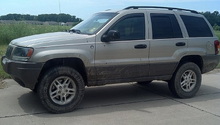Jeep Cherokee 1984-2001: Why is My Car Burning Oil?
Does the oil level appear low on the dipstick? Continue reading to find out why.
This article applies to the Jeep Cherokee XJ (1984-2001).
Engine oil is essential to the smooth operation of your motor. Not only does your motor need oil to run, but it needs a sufficient amount. If your motor is lacking the proper amount of engine oil, the internal components don't get lubricated well and could cause engine component failure. Naturally, when the combustion process takes place, oil is burned. But, there should not be excessive oil being burned. Proper vacuum and air flow helps the oil burn in the correct amounts. If the air inducted in the system is not flowing properly, this could cause the engine to work harder at consuming oil. Many vehicle's crank case ventilation systems aid in this. This system is comprised of a series of plastic and rubber tubes, as well as hoses and components. Checking this area along with a proper compression test of the cylinders should give you a clear idea on what the cause of your burning oil is. As a rule of thumb, if you don't know the history of the vehicle's maintenance, make sure it has at least had a proper tune up. Faulty spark plugs and worn air filters can also cause burning of engine oil.

Materials Needed
- Compression tools
- Screwdriver or pick
- Socket wrenches
- Spark plug pullers
- Pliers
- TB cleaner
Step 1 – Inspect the CCV system
The Crank Case Ventilation (CCV) system utilizes a series of rubber and plastic components, which wear over time.
- Observe the area around the valve cover for "wet" and "oily" appearance.
- Observe condition of rubber "elbow" connecting the CCV system.
- Replace "elbow" if it is corroded and leaking.
- Replace rubber hoses if found to be brittle or torn.

Figure 1. Oil blow-by seepage. 
Figure 2. Additional points of oil seepage.
Pro Tip
If the hoses are not worn or brittle, it's a good idea to remove and clean them out with TB cleaner to keep the passageways free of gunk.
Step 2 – Do a compression test
A compression test will help you determine if there are fouled plugs as part of the cause, and/or if one of your cylinders has a bad seal/guide or even rings.
- Remove the spark plugs from cylinder 1 and inspect for oil.
- With the cylinder exposed now, use the compression tool to take a reading of compression.
- Repeat for remaining cylinders.

Pro Tip
If you determine one of the cylinders to have less pressure than the rest, it may be necessary to have the valves and rings replaced. If the only thing determined are "oily" spark plugs, then simply replace the fouled spark plug.
Step 3 – What color is the smoke?
If your Jeep is smoking, it's often a good indicator of the issue at hand. Often the color of the smoke can indicate the likely cause or related symptom.
- If the vehicle is burning a steady white or gray smoke, there may be coolant mixing in with the oil burning off.
- With motor color, remove radiator cap to inspect "milky" and "oily" residue.
- Smell the exhaust fume briefly for a "sweet" smell; that smell would be coolant.
- If the vehicle is burning blue smoke, then excessive oil is being burned.

Pro Tip
If any of the above steps hold true for white/gray smoke, it is likely your head gasket is the culprit and should be replaced. Additionally, if you smell coolant in your interior cabin, the heater core could be the culprit.
Related Discussions
- Burning Oil Inconsistently - CherokeeForum.com
- Burning or Losing Oil? - CherokeeForum.com
- Smoking, Burning Oil. Help. - CherokeeForum.com
- Burning Oil, Gas Smell - CherokeeForum.com
- Burning Oil Bad - CherokeeForum.com






